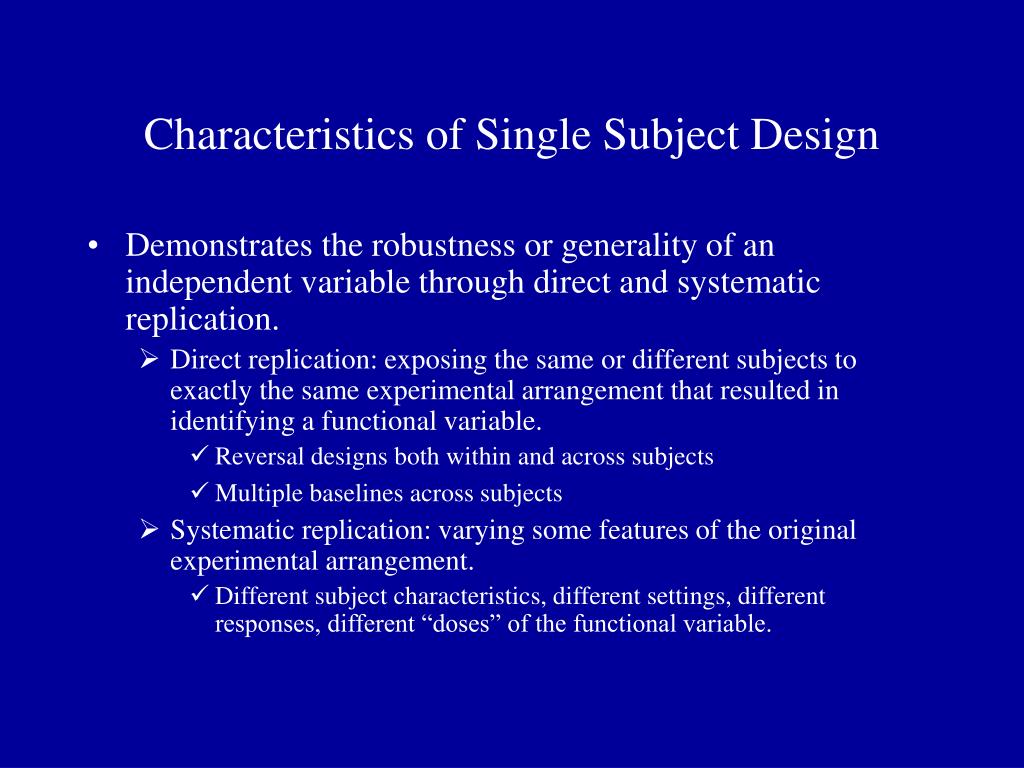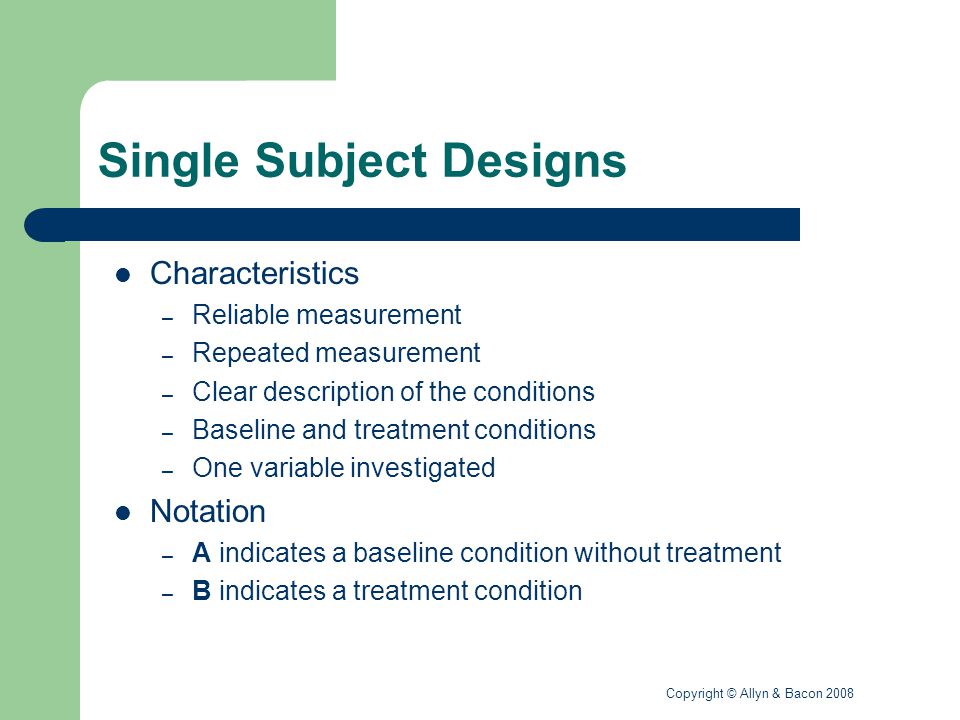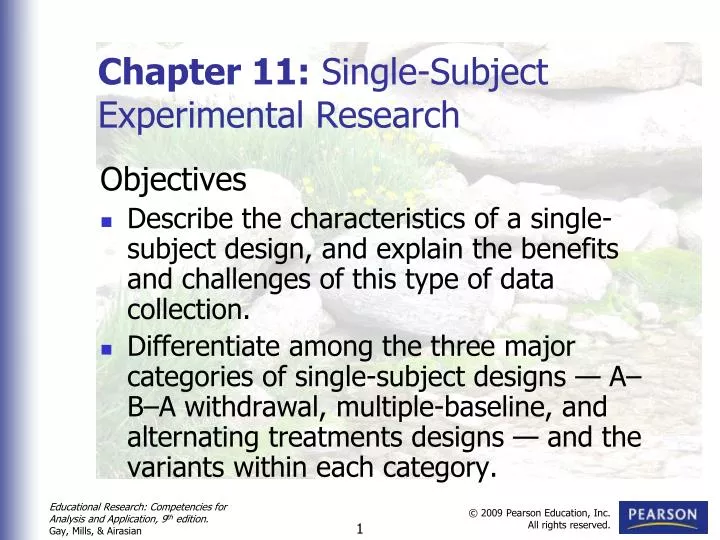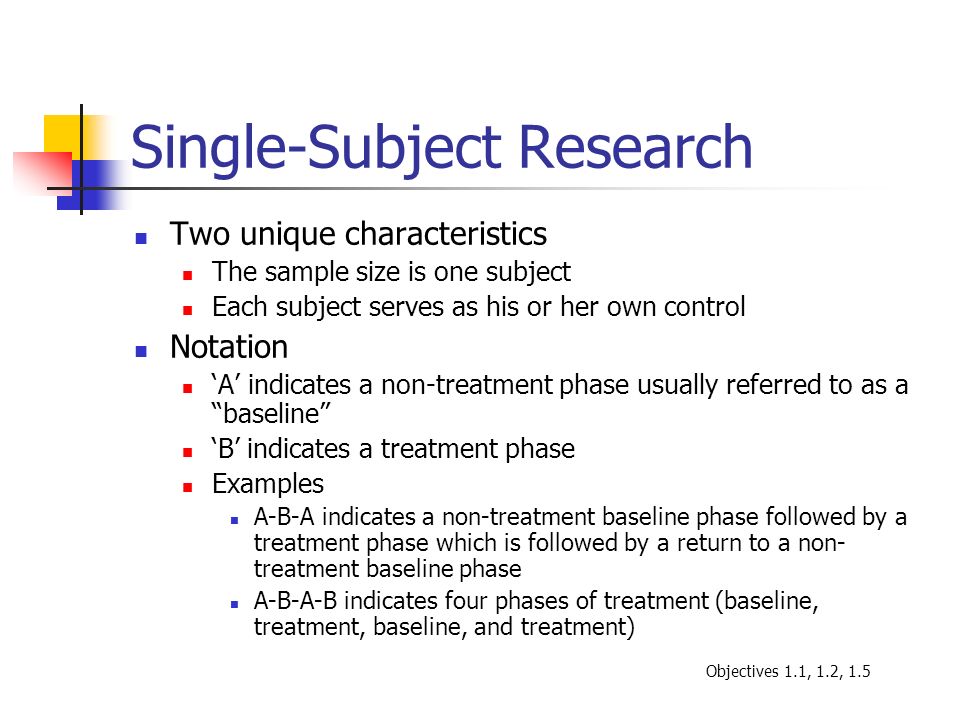Benefits of Single Subject Design Study low incidence populations and behaviors Cost effective Evaluate intervention prior to large scale study Flexible design is adaptable to situation Can be conducted in practice settings Test clinical hypotheses Monitor progress in applied settings Limitations of Single Subject Design. Between-Subjects Design Examples Pros Cons.

Ppt Single Subject Research And Evidence Based Interventions Are Ssds Really The Ugly Stepchild Powerpoint Presentation Id 352941
Graphing the data facilitates monitoring and evaluating the impact of the intervention.

. Since these designs contain many measures of behavior it is important to have reliable. This is the level of. McMillan Reference McMillan 2004 identified five defining characteristics of single-subject designs that rendered them an appropriate method for research within this field.
Uses a single subject 2. The phases of a single-subject design are almost always summarized on a graph. All of the following are characteristics of single-subject experimental designs SSEDs except.
Do not have adequate control for the factors that affect the internal validity of an experiment AB design - ONLY pre-experimental design. Responses are collected frequently 3. It is more typical for there to be somewhere between two and 10 participants.
First such designs can demonstrate clear causal relations between intervention and behavior change. The y axis is used to represent the scores of the dependent variable whereas the x axis represents a unit of time such as an hour a day a week or a month. Graphing the data facilitates monitoring and evaluating the impact of the intervention.
In experiments you test the effect of an independent variable by creating conditions where different treatments eg. Characteristics of Single-SubjectSystem Designs According to Kratochwill and Williams 1988 single-case experimental designs have following five characteristics. Characteristics of single subject design 1 Reliable measurement.
Download Table Participant Characteristics Settings and Design Features of the Single-Subject Design Studies from publication. Single-subject research designs typically involve measuring the dependent variable repeatedly over time and changing conditions eg from baseline to treatment when the dependent variable has reached a steady state. During the first phase A a is established for the dependent variable.
Is a type of quantitative research that involves studying in detail the behaviour of each of a small number of participants. Note that the term single-subject does not mean that only one participant is studied. Data collected prior to during and following the intervention allow measurement of changes.
Single-subject experimental designs SSEDs represent an important tool in the development and implementation of evidence-based practice in communication sciences and disorders. McMillan Reference McMillan 2004 identified five defining characteristics of single-subject designs that rendered them an appropriate method for research within this field. Single-Subject Research Designs General Features of Single-Subject Designs.
-An advantage of single-subject designs is that they can be applied in settings where _____ designs are difficult to put into play. The researcher repeatedly assesses the DV across various phases of the experiment. Essential characteristics of Single-subject Research-Single-subject research involves the extensive collection of data on _____ subject at a time.
Evidence-Based Practices for Young Children With. A small number of participants b repeated measurement of the dependent variable c logical generality d positive correlation e visual inspection of data. In a between-subjects design or a between-groups design every.
Single-subject designs appropriate for the needs of the special education field. There are variations with each subject. Published on March 12 2021 by Pritha BhandariRevised on September 3 2021.
This phase is different from most experiments in. A placebo pill vs a new medication are applied. These characteristics include the use of repeated measures over a minimum of two conditions inclusion of a baseline and treatment condition reliable means of measurement explicit.
Single subject research designs are weak when it comes to external validityStudies involving single-subject designs that show a particular treatment to be effective in changing behavior must rely on replicationacross individuals rather than groupsif such results are be found worthy of generalization Fraenkel Wallen 2006 p. - Single-subject studies have methodology that incorporates elements of nonexperimental case studies and time-series designs. - To qualify as a true experiment the graph of a single-subject study must provide convincing evidence that the treatment has caused a change in behavior.
The purpose of this article is to review the strategies and tactics of SSEDs and their application in speech-language pathology research. Emphasis on knowledge for immediate use. The same behavior is measured repeatedly.
3 Description of. Before looking at any specific single-subject research designs it will be. Despite their limited use single-subject research designs have significant methodological advantages over large-sample research designs that could be used to facilitate more rapid clinical research advances.
Characteristics of Single-Subject experimental designs SSEDs Small number of participants Importance of individual differences.

Quasi Experimental And Single Case Experimental Designs Ppt Download

Experimental Research Designs Ppt Video Online Download

Ppt Chapter 11 Single Subject Experimental Research Powerpoint Presentation Id 4529481

Single Subject Experimental Research Ppt Video Online Download

Single Subject Design Ppt Download

Single Subject And Correlational Research Bring Schraw Et Al Ppt Download

Ppt Single Subject Research Design In A School System Powerpoint Presentation Id 726774
0 comments
Post a Comment